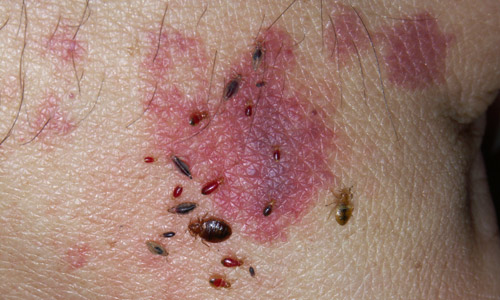Silverfish are a warning sign that our home has developed entry points, more specifically which may have been caused by water damage. These pests are most active at night. Being nocturnal, they can easily go unnoticed and populations can multiply fast. During the day they hide in nooks and crannies in dark areas. Silverfish cannot […]
Stag beetles are one of the most spectacular insects. The male’s large jaws look just like the antlers of a stag. They spend most of their life underground as larvae, only emerging for a few weeks in the summer to find a mate and reproduce. A fully-grown grub can be up to 110mm long. They […]
Carpet beetles are responsible for more damage to carpets, rugs, and other woolens than clothes moths. Four species of carpet beetles are commonly found, when carpet beetles get in touch with the food left unprotected, they will leave excrement and saliva. This leads to contamination of the food and poses health risks to people who […]
Subterranean termites are social insects that live in colonies containing caste systems. Typical colonies have three distinct castes: reproductives, workers and soldiers, the queen may live for many years, and soldiers and workers may live one to two years, mature subterranean termite colony can consist of anywhere between 60,000 and two million workers. Subterranean termites […]
Digger wasps are very large passive aggressive wasps that build their nests in dry, unfertilized soil. They are typically large and black bodied with yellow stripes on their back end. When fully grown, they measure about one and a half inches in length with about a one and a quarter inch wide wingspan. Digger wasps […]
Wheel bugs are diurnal pests and should be careful not to handle them, they are named so due to the distinctive, serrated crest on its pronotum that in profile resembles a portion of a wheel or gear, A bite from this species is very painful. It is reported as causing intense pain followed by numbness. […]
Pantry moths are small grey/brown winged insects around ½-inch in length, most commonly found indoors, in locations where food packaging is stored. They are known to cause terrible damage to food, spoiling it as it becomes invaded by pantry moths’ larvae. They often come in through doors and windows or openings around vents or cables […]
Bed bugs are small, parasitic insects that like to live on mattresses, box springs, and other furniture. They are flightless but tend to crawl extremely quickly. The size of an apple seed, a bed bug survives off of blood. Identification of Bedbugs: 1.Red, small, itchy bites on skin, with a number of bites where the […]
Snipe flies are small. They get their name from the similarity of their often prominent proboscis that looks like the beak of a snipe. These flies are active predators and can often be found sitting head down on fence posts, watching for passing prey. They are sometimes called “down-looker” flies.
Sand flies are tiny insects about 3 mm long, they have long, piercing mouthparts that are well adapted for sucking blood from their host. Sand flies hold their hairy-looking wings in a vertical V-shape when at rest, a characteristic that distinguishes them from some other small flies. Human skin odors, produced by bacteria from skin […]










